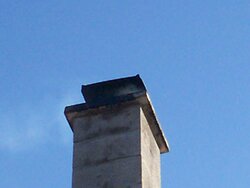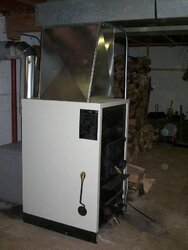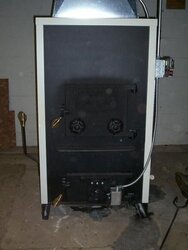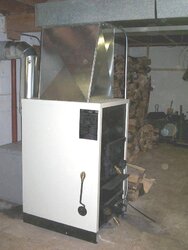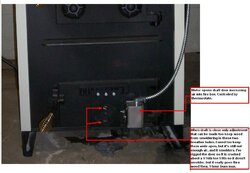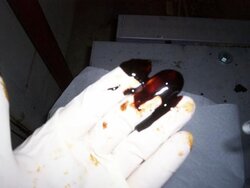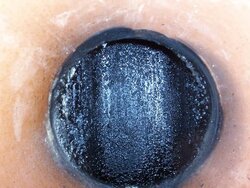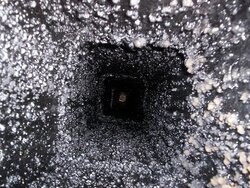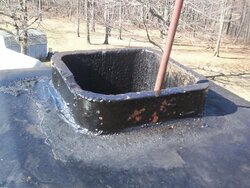Hello Everyone
I'm new here, and thought I'd asked the more experinced too possibly answer an issue I'm having with my new stove, and chimney. We recently (this past winter) had a chimney fire, it wasn't bad but opted for me too replace my old setup. We had a new chimney put up (8" tile lined 8" thimble), and installed a Harman SF 2500A wood/coal warm air furnace (uses 7" stove pipe). This system limits the damper thru the thermostate too control the stove temperature. But I've bypassed this setup because it was snuffing the stove too much, and we were getting a very dirty chimney consisting of glazing, and moisture. Including making black icicles up top of the chimney outside. I've been running the setup much hotter constantly, not letting it snuff itself. But still have moisture collecting (freezing/dripping) outside at the top of the chimney. It's still creating black icicles at the top, but not quite as much. I know my wood is seasoned very well, and dry. I've attached a pic of the mess. What the heck could be causing this issue. This is driving me crazy. Anyone have any insight? It would be greatly appreciated.
DavidJinPA
I'm new here, and thought I'd asked the more experinced too possibly answer an issue I'm having with my new stove, and chimney. We recently (this past winter) had a chimney fire, it wasn't bad but opted for me too replace my old setup. We had a new chimney put up (8" tile lined 8" thimble), and installed a Harman SF 2500A wood/coal warm air furnace (uses 7" stove pipe). This system limits the damper thru the thermostate too control the stove temperature. But I've bypassed this setup because it was snuffing the stove too much, and we were getting a very dirty chimney consisting of glazing, and moisture. Including making black icicles up top of the chimney outside. I've been running the setup much hotter constantly, not letting it snuff itself. But still have moisture collecting (freezing/dripping) outside at the top of the chimney. It's still creating black icicles at the top, but not quite as much. I know my wood is seasoned very well, and dry. I've attached a pic of the mess. What the heck could be causing this issue. This is driving me crazy. Anyone have any insight? It would be greatly appreciated.
DavidJinPA


